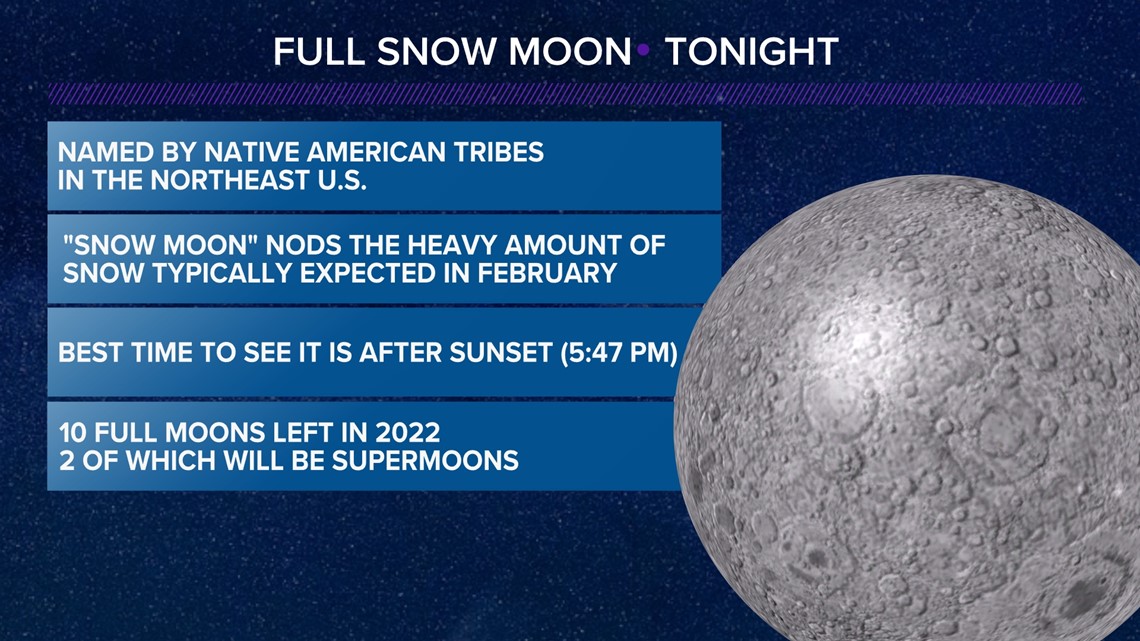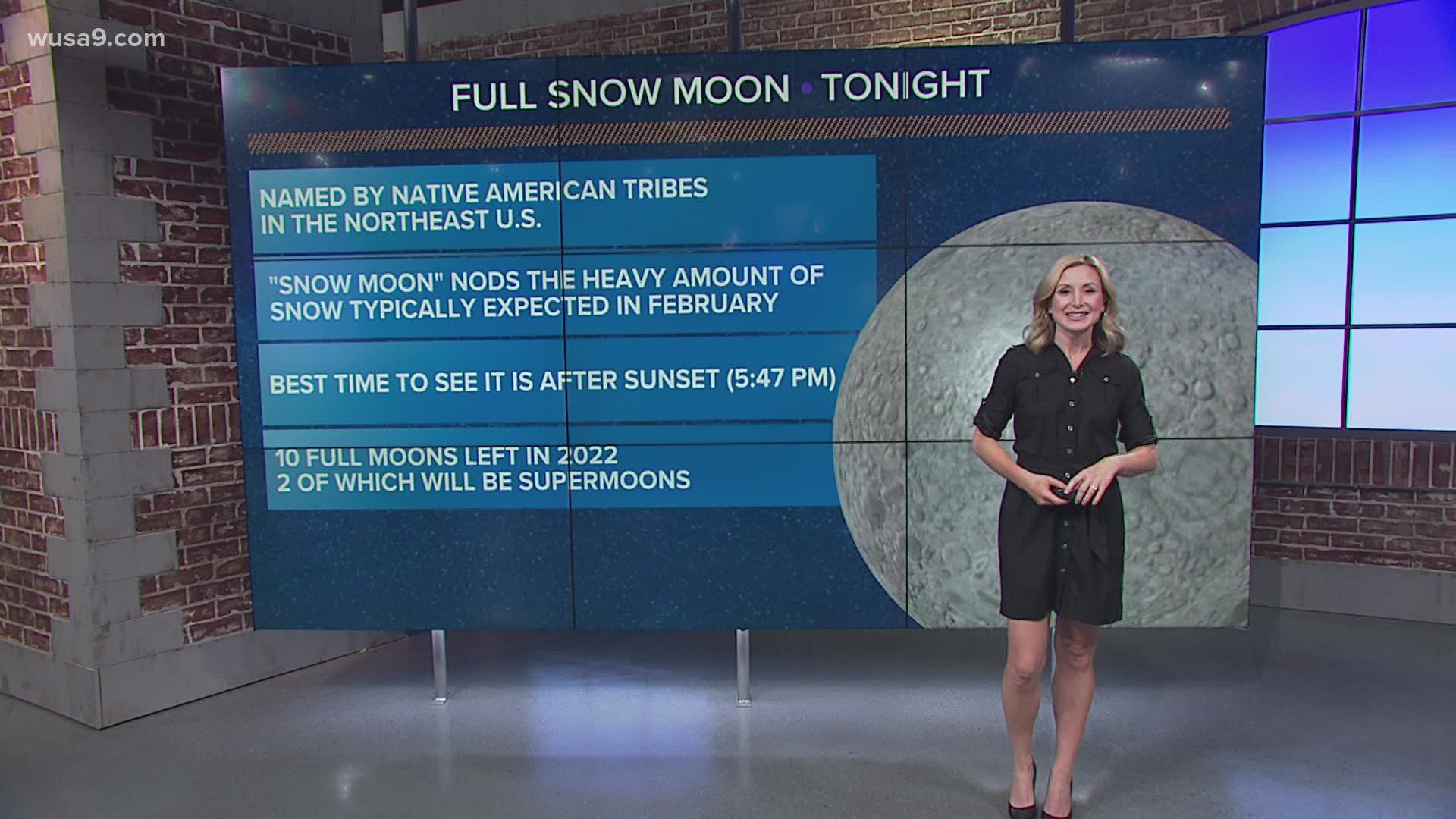WASHINGTON — For all the lunar enthusiasts, don't forget to look up Wednesday evening, as you may see the second full moon of the year, otherwise known as the "Snow Moon."
The snow moon was actually its brightest at 11:57 a.m. Wednesday, but the best time to view it is after sunset. For D.C., that will be at 5:47 p.m.
The full moon was first referred to as the "snow moon" by Native American tribes in the northeastern United States because of the heavy snowfall that traditionally fell during the month of February.
The February full moon has also been referred to as the "bony moon," "hunger moon" and "little famine moon" because hunting resources were sparse during the snowy winter months.
While clouds will increase throughout the night, you should be able to see the full moon just fine. It will remain visible until midnight Thursday. Just look up to the northeast. You may also see a bright star referred to as Regulus.
If you miss Wednesday's full moon, there are still 10 more left in 2022, two of which will be supermoons.
Here's a list of full moons to come:
- March 18: Worm moon
- April 16: Pink moon
- May 16: Flower moon
- June 14: Strawberry moon
- July 13: Buck moon
- Aug.11: Sturgeon moon
- Sept. 10: Harvest moon
- Oct. 9: Hunter's moon
- Nov. 8: Beaver moon
- Dec. 7: Cold moon
While these are the names each moon is often called, the significance of each full moon varies across Native American tribes.



